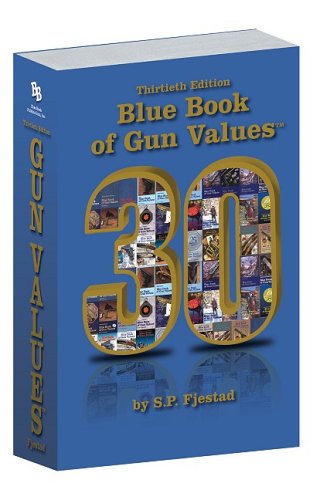Many of us, sometime in our shooting lifetimes, will purchase a used firearm. Sometimes this will be done for financial reasons, and other times, nostalgia might play a big part in certain purchases and then there are those spur-of-moment type transactions resulting from your coming upon a "good deal."
Firearms differ from other consumer products in that – with proper maintenance – their serviceable life can be measured in generations. I own several firearms that are over a century old but, thanks to proper maintenance and the fact that proper ammunition for them is still available; they are as useful today as they were in the 19th century.
But that being said, there are a lot of "dogs" out there! All too often a firearm is put away in a closet (probably a damp one?) and forgotten. Needless to say, such treatment does little for the firearm’s appearance, to say nothing of mechanical integrity or overall safety.
Besides finding a good deal on a used firearm, the search itself can be an enjoyable and educational experience. The key to a successful search for a used firearm is preparation. Good preparation can be broken down into four stages: research, examination, questioning, and suitability. For example, let’s assume you are looking for a used rifle or shotgun for hunting. The four stages of preparation would look something like the following:
 Gun Digest 2009: The W...
Best Price: $2.36
Buy New $58.86
(as of 11:20 UTC - Details)
Gun Digest 2009: The W...
Best Price: $2.36
Buy New $58.86
(as of 11:20 UTC - Details)
Do your Research
It behooves the smart shopper to decide, if possible, on a particular brand and model before the search begins. Then, with a bit of further research into the brand or model you can save a lot of time, trouble and money in the long run. Some things to consider:
- Is the firearm still manufactured and is the maker still in business? The availability of spare parts, accessories and/or service may be important to you.
- How old is the firearm? Popular models often have a production life of many decades. Knowing serial number ranges and differences in markings between old and new would be a big help. Being aware of the styling differences (stock design, barrel lengths, caliber options, types of sights, etc.) can also help date the firearm. You can also check manufacturers web pages for historical information.
- Is factory ammunition still available from retail outlets?
- Has that model has ever been subject to a factory recall?
- Does the manufacturer offer second owner warranties?
- What is a fair price for that make and model firearm? Check the Blue Book of Gun Values and/or other trade publications, to ascertain a price range.
Make a Thorough Examination
 Blue Book of Gun Values
Best Price: $5.99
Buy New $31.90
(as of 09:10 UTC - Details)
Blue Book of Gun Values
Best Price: $5.99
Buy New $31.90
(as of 09:10 UTC - Details)
Examination of a used gun is essential. When looking at used guns you should always keep in mind the old axiom, "Beauty is only skin deep."
- Has the firearm been allowed to rust? Check the barrel, receiver, magazine, trigger assembly, and all metal parts for rust and pitting. Are there loose, broken, worn or missing parts on the firearm? If so, walk on!
- Is the barrel in good condition? Check the bore and chamber with a bore light for excessive wear, rust, or lead/metal build up. The latter often hides the former. Are there nicks or dents in the muzzle crown that will adversely affect accuracy? Examine the barrel (inside & out) for bulges.
- Does the stock appear to be oil/solvent soaked? Are there cracks and dents? Does the firearm look like it has ever been dropped or abused? If possible, examine underneath the stock. This is where evidence of lack of maintenance is often found.
- Is the gun in original condition? Has the barrel been shortened, the stock reworked, or replaced or has the trigger been adjusted? Question any modifications, changes, non-factory additions or accessories.
- Does the gun appear to have been kept clean and maintained properly?
- What is the condition of the magazine? Check the magazine for proper function. Determine whether it been modified and how many rounds it will hold. The latter may have legal repercussions in some jurisdictions.
- Do the receiver and bolt serial numbers match? Does the bolt function smoothly? When closed is the bolt loose or difficult to open? Ask permission to strip the bolt to check for rust, dirt and the condition of the springs and firing pin.
- Has the trigger mechanism or safety been modified or altered in any way? Make sure both work as intended.
September 24, 2009





